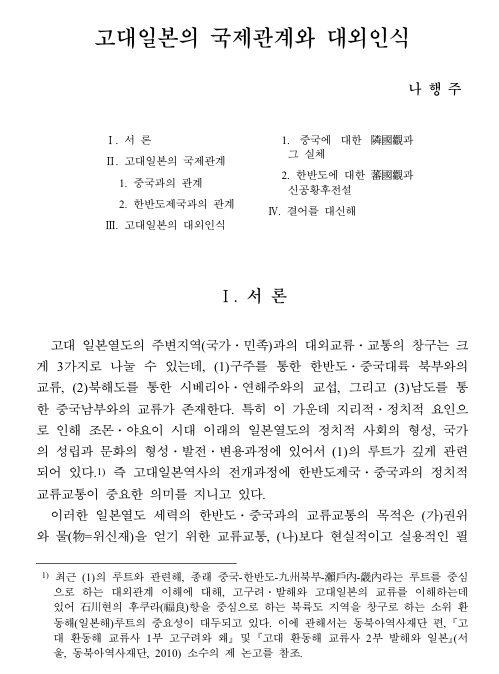나행주, 2012, 〈고대일본의 국제관계와 대외인식〉, 《史林》 41, 수선사학회.

The International Relationship and Foreign recognition of the Ancient Japan This article investigated the international relationship and foreign recognition of the ancient Japan, and the result if as follows. The most important way for international exchange of the Japanese Archipelago(Islands) was a route of Kyusyu(九州). It was from Kinai(畿內) and Kyusyu, to the Korean Peninsula and China. Especially the exchange with the Korean Peninsula was weighty, it means the route to the Korean Peninsula was highly significant. The ultimate objective of international relationship of the ancient Japan with China was to acquire authority (before 6C) and to adopt political culture (after 70). While, with the Korean Peninsula, it was constant for getting indispensable supplies and things advanced. In other words, the purpose of the relationship with the Korean Peninsula was to obtain material and human resources more practically than one with China. The recognition for China and the Korean Peninsula of the ancient Japan was completely divorced from circumstances of the ancient times. And its ground came from the historical view of Nihonsyoki, based on the law, formed at 8C, and the legend of Empress Jingu. Therefore, in the recognition of the ancient Japan, China was a neighboring country(隣國), having an equal relationship. And the countries of the Korean Peninsula was savage country(蕃國), being shield to keep the ancient Japan safe. But, considering the circumstances at the ancient times, the Ancient Japan was a tributary state(朝貢國) of China, and basically had a equal relationship with the Korean Peninsula.


의견쓰기
0 개의 의견이 있습니다.